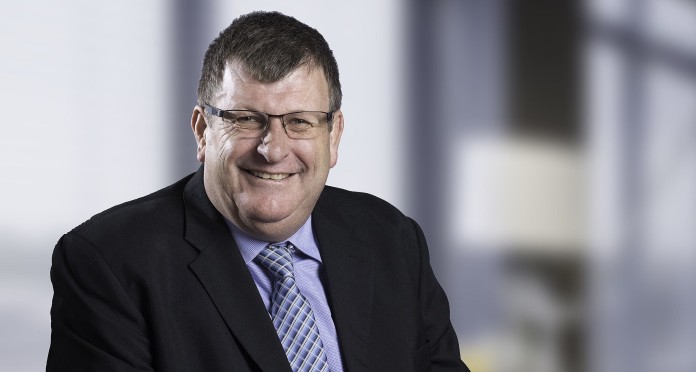
EXECUTIVES at Harmony Gold struggled to recall the last time the company had net cash. “Not in my lifetime,” CEO Peter Steenkamp said in an interview earlier this month.
Steenkamp is bidding Harmony farewell after nine years at the helm. He was previously head of operations before leaving for stints with Sasol Mining and before that, his misstep at the ill-fated Pamodzi Gold, where he was CEO. Steenkamp’s retirement comes just as Harmony registers record full-year earnings — and is arguably at its apogee.
Operating free cash flow was R12.7bn in the 12 months to end-June, another record. Net cash is R2.8bn as of June 30. What’s more, those numbers were achieved at an average gold price of $1,999/oz. Since July, the dollar gold price has surged from about $2,300/oz to $2,575/oz. While Harmony’s costs are forecast to rise between 13% and 22% this year, they include growth capital. All other things being equal, the company is primed for another blockbuster.
Despite this, Harmony didn’t add to its dividend declaration with a special payout. Shareholders will have to be content with R1.39bn, or 20% of net cash flow (2023: R136m). “I think shareholders will be happy with it,” said Steenkamp, adding that Harmony needs the money for a major transformation. “You return a lot of money to shareholders today, and then in another year approach them for money. It doesn’t make a lot of sense.”
An investment decision is due on Eva Copper, a project in Australia that Harmony bought last year for $170m and that represents a strategic departure into the energy transition supply industry. Eva Copper’s capital cost will exceed the $597m estimated by its previous owner but, as a 15-year project in a much-desired metal, it has a logic to it. “Our shareholders will be happy with Eva Copper because it is a good asset, a sizeable asset,” said Steenkamp.
Growth capital of R3.8bn is also projected in South Africa, R1bn more than in the 2024 financial year, contributing towards total capital (including stay-in-business) of just over R10bn. Over three years, Harmony plans to spend R30.5bn including just under R8bn at Mponeng, the much-fêted gold mine that descends deeper than any other.
To be fair to Harmony, gold shares globally have been reticent about going big on payouts. Barrick Gold CEO Mark Bristow said this year his firm is hanging tough on the balance sheet while it works through liabilities. Folllowing a year where a lot didn’t go right on the operational front, Newmont is looking to consolidate. Both companies are investing in resource and reserve replenishment.
Only lately — amid a fresh pulse in the gold price — are the metal’s North American miners reflecting the market: Newmont is 29.7% higher this year while Barrick has gained 12%.
Similarly Harmony Gold, which has white-knuckle survival in its DNA, is preserving cash so it can at last spread its wings. The Wafi-Golpu project, which it shares with Newmont in Papua New Guinea, is waiting on a special mining lease from the government. The permit is tantalisingly close after years of delay. “If there’s one final box I want ticked before I retire, that is it,” said Steenkamp.
He adds that once Wafi-Golpu is approved, and given Harmony’s much-improved balance sheet, it will be able to “participate” in the project, which suggests that previously the company might just have been a seller of the project equity.
A version of this article first appeared in the Financial Mail.










